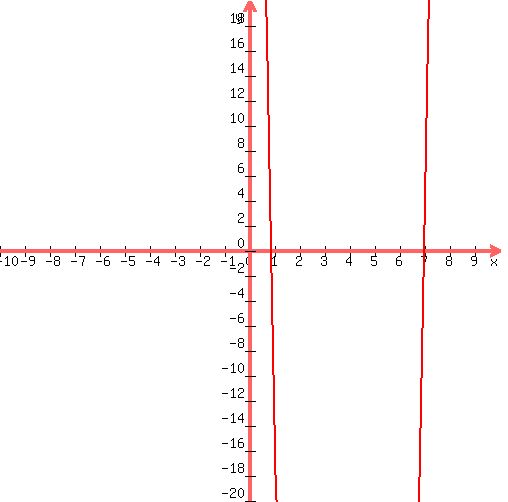Question 1053024: The sides of the right triangular lot has a dimensions of (5x-11), (x) and (3x+4) meters respectively. What is the area of the lot?
Answer by Alan3354(69443)   (Show Source): (Show Source):
You can put this solution on YOUR website! The sides of the right triangular lot has a dimensions of (5x-11), (x) and (3x+4) meters respectively. What is the area of the lot?
-----------
For all sides to be >0, 5x-11>0 --> x>2.2
-----
3x+4 > x for x>2.2, so x is not the hypotenuse.
----
Either (3x+4)^2 + x^2 = (5x-11)^2
or
(3x+4)^2 = (5x-11)^2 + x^2
================================
Case 1: 5x-11 is the hypotenuse
---
(3x+4)^2 + x^2 = (5x-11)^2
10x^2 + 24x + 16 = 25x^2 - 110x + 121
15x^2 - 134x + 105 = 0
| Solved by pluggable solver: SOLVE quadratic equation (work shown, graph etc) |
Quadratic equation  (in our case (in our case  ) has the following solutons: ) has the following solutons:

For these solutions to exist, the discriminant  should not be a negative number. should not be a negative number.
First, we need to compute the discriminant  : :  . .
Discriminant d=11656 is greater than zero. That means that there are two solutions:  . .


Quadratic expression  can be factored: can be factored:

Again, the answer is: 8.06543188700421, 0.867901446329125.
Here's your graph:
 |
========
x =~ 8.065
x1 is rejected, it's less than 2.2
====================
Case 2: 3x+4 is the hypotenuse
---
(3x+4)^2 - x^2 = (5x-11)^2
8x^2 + 24x + 16 = 25x^2 - 110x + 121
17x^2 - 134x + 105 = 0
| Solved by pluggable solver: SOLVE quadratic equation (work shown, graph etc) |
Quadratic equation  (in our case (in our case  ) has the following solutons: ) has the following solutons:

For these solutions to exist, the discriminant  should not be a negative number. should not be a negative number.
First, we need to compute the discriminant  : :  . .
Discriminant d=10816 is greater than zero. That means that there are two solutions:  . .


Quadratic expression  can be factored: can be factored:

Again, the answer is: 7, 0.882352941176471.
Here's your graph:
 |
===========
x = 7 ****** (the other solution is less then 2.2 and rejected)
--------------
Use the 2 values of x to find the lengths of the 2 short sides, a & b
Area = a*b/2
|
|
|